Contents
Today there are more devices that are online than people. Everything starting from the devices in our pockets to the car that we drive can transmit information about our lives. This ecosystem is known as IoT (information of things). Until recently, the access to the internet was limited to only certain devices like desktops, tablets or smartphones but thanks to IoT’s, all appliances can be connected to the internet and monitored remotely. We can’t imagine our lives without it, because it shapes the way we live.
What exactly is IoT?
The IoT is an ecosystem of billions of physical devices around the world that are interconnected with one another whose purpose is meant for sharing and collecting data. This interconnection levels up the digital intelligence of devices and machines, thus allowing them to communicate real time data without being monitored by a human being. IoT’s can range from small household cooking appliances to something as serious as a driverless car.
The best example for an IoT device is a smart home. If you’re at work and you’ve realised that you’ve forgotten to turn off the water heater before leaving, rather than travelling all the way back, IoT’s make it so much more convince the to access the status of your water heater. This is because it provides a better insight to the working of things around us.
The umbrella that it offers for the networking, communication and connectivity protocols has reached a milestone by not only making advances in recent technologies, but by putting into practical use as well.
Here are a couple of IoT starter kits that perform tasks in a fancier way:
1. ESP8266 weather station kit
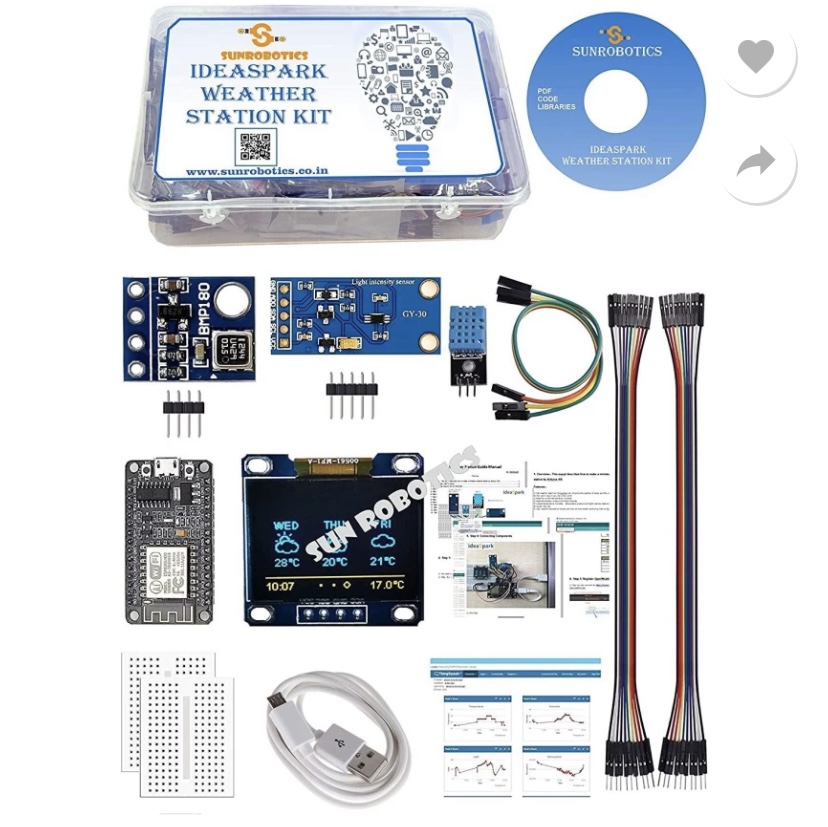
Ever wonder on which days you might need an umbrella or in which days the sky seems to be clearer and brighter? The weather station ESP8266 has your back by being able to display weather data from any city in the world.
- The hardware of the 8266 weather station consist of 128×64 OLED display, an AMS117 module whose regulator is of 3.3V, USB to serial converter and an ESP8266 Dev board.
- This device has sensors to collect temperature, humidity, atmosphere pressure and light data.
- The weather station reads data from the screen every 5 seconds and uploads it to the internet every 60 seconds. Quite witty isn’t it?
Pros:
- Easily accessed weather forecasts upto the next three days in any city of the world.
- Provides excellent documentation.
- Promises a high quality kit.
Cons:
- This feature is not supported on mac, and is limited to only certain PC’s.
- The code is quite tricky to figure out.
2. ThingPulse ESP8266 wifi IoT starter kit:
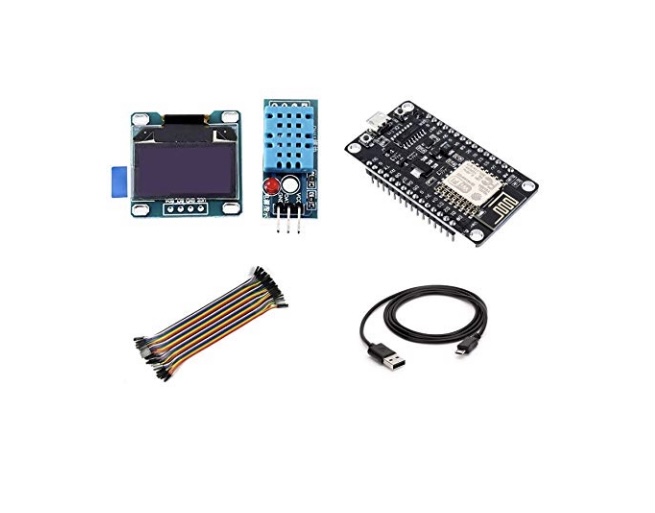
This kit is developed specially for their who want to learn and play IoT. It’s got several open source coding resources and mobile applications to help newbies get started in an easy and conventional way.
- It’s interesting to know that this IoT starter kit is compatible with Arduino.
- It’s got an ESP8266 microcontroller circuit board, OLED display (128×64) with a 4 pin connector, DHT11 sensor with 3 pin break out board, a USB cable for powering the development module, a female to female jumper (40×40 cm),a 60 page manual and a set of precise of instructions that make up the hardware components. It’s the perfect companion kit.
Pros:
- Only requires minimal components to get it started.
- Beginner friendly starter kit.
- Affordable.
Cons:
- Fails to meet the industrial standards.
- The chip is sensitive to fluctuating levels of voltage and noise.
3. Osoyoo NodeMCU IoT starter kit
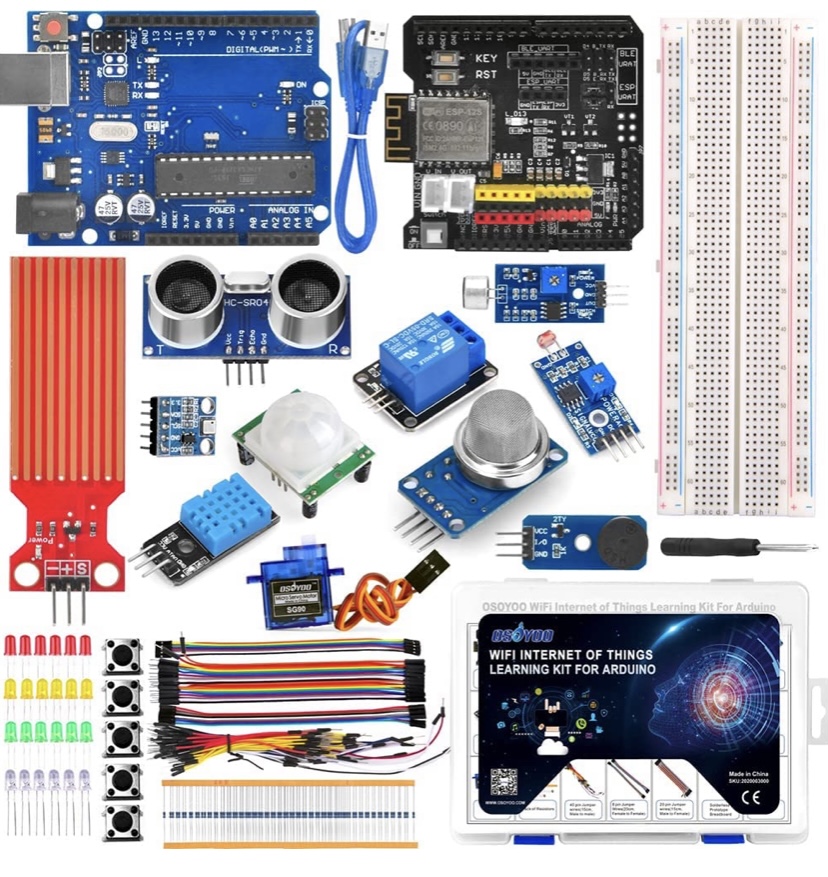
- This starter kit is basically designed for people who want to learn how to build which is internet connected.
- For this, an Arduino uno or microcontroller is not required. It allows users to turn the idea into a practical application and to make the internet of things a reality.
- The hardware basically consists of a USB cable, 1 node MCU board, a 1K ohm resistor, and breadboard, a push button and a couple of jumper wires.
- It is an open source platform whose design is meant for editing, modifying and building.
Pros:
- Useful for home improvements, hacathons and science fairs.
- Improves practical skills for programming and electronics.
- Consist of many free open source resources.
- Powerful storage capabilities.
Cons:
- Smaller in appeal.
- It can be quite challenging to ensure that the wifi connects properly.
4. Arduino Opla starter kit
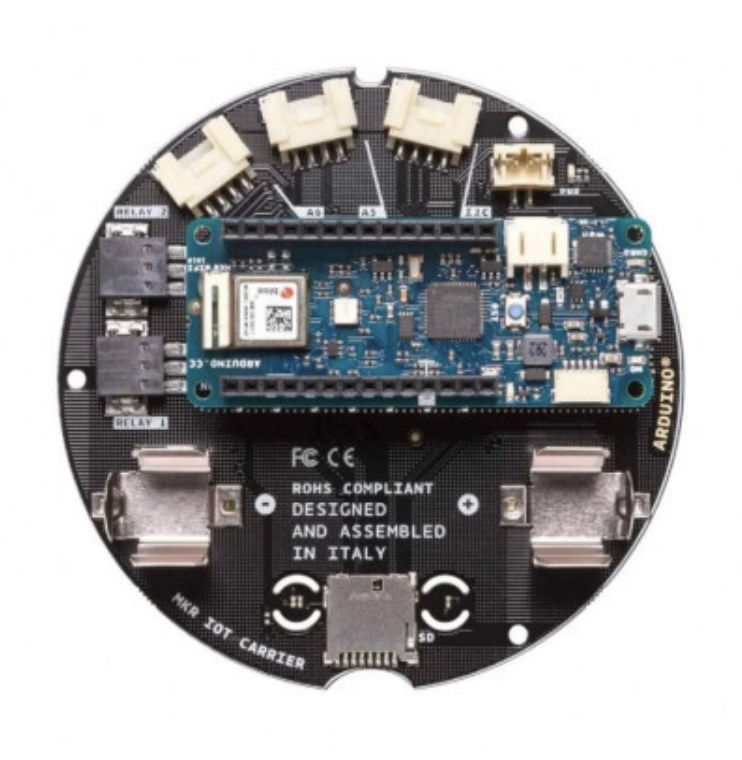
This device allows you to experience the internet of things in your hands. It allows you to add smart technology to your home or work place. The opla unit acts as a physical interphase with the Arduino IoT cloud, thus allowing you to have complete control to manage all settings, switching devices on/off and creating dashboards.
The 8 projects based on the opla starter kit are:
- Remote controlled lights
- Personal weather station
- Thermostat control
- Inventory control
- Solar system tracker
- Home security alarm
- Thinking about you
- Smart garden
- The hardware parts consist of a round OLED display, 5 capacity five touch buttons, an 18,650 li-ion rechargeable battery, 5 RGB LED’s, 5D card holder, two 24 V relays, a moisture sensor, PIR sensor, a micro USB cable , on board sensors and plug and play cables.
Pros:
- Secure data transfer is ensured.
- Suitable for professionals.
- Adds instant smart connectivity to devices and appliances.
Cons:
- Initial cost is high.
- Not much use outside of learning.
5.Particle Argon IoT starter kit
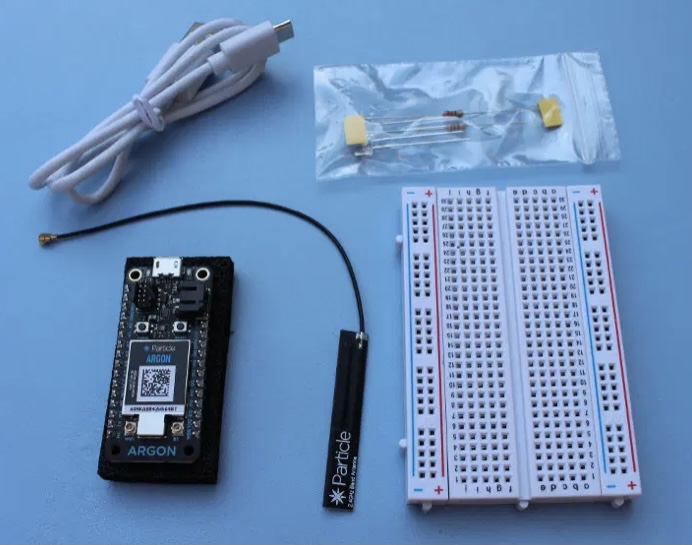
This is ideal for inexperienced IoT project builders considering that it’s components and contents are appropriate. The Particle Argon is an IoT development kit that allows you to connect your mesh network to Wi-Fi.
It acts as a stand-alone wifi end point for a mesh particle network to work. It simplifies writing and deploying the code.
- The hardware parts include an Argon development board, a Mini breadboard, 2.4GHz flex antenna, USB cable, starter project includes two resistors (220 ohm), one red LED, and one photodiode.
Pros:
- Provides resilient network
- Extends the device life.
- Makes local communication more intelligent.
Cons:
- It is costly.
In conclusion, IoT impacts our society in a positive manner by ensuring that businesses and governments run significantly, reducing healthcare costs and overall, improving the quality of life. It promises to bring substantial socio-economic benefits by increasing nearly 0.2% of GDB.
IoT’s got the potential to streamline our daily activities and is making a steady progress with each milestone, chafing the world one step at a time.

An ambitious warrior to overcome the adversities of life and find the path to my victory. In search of my innerself in the works of time and space.
